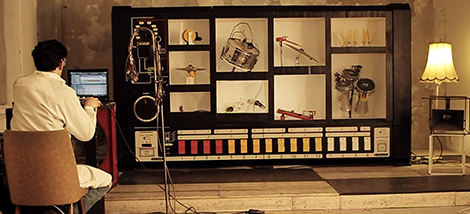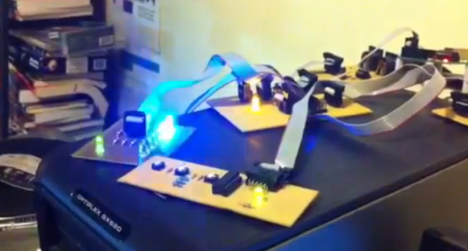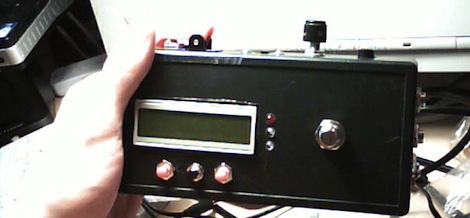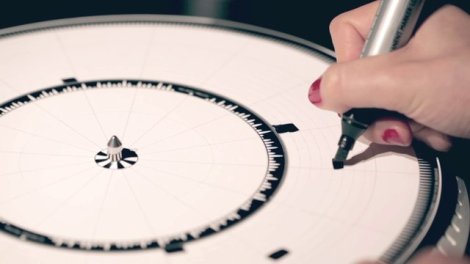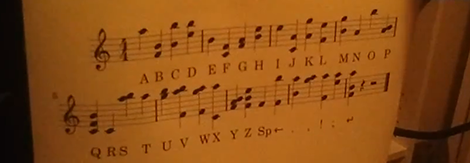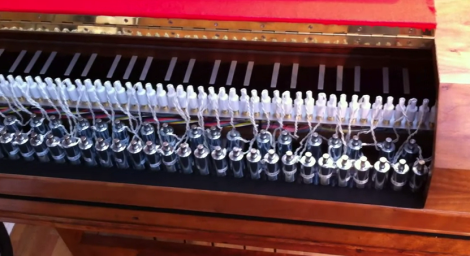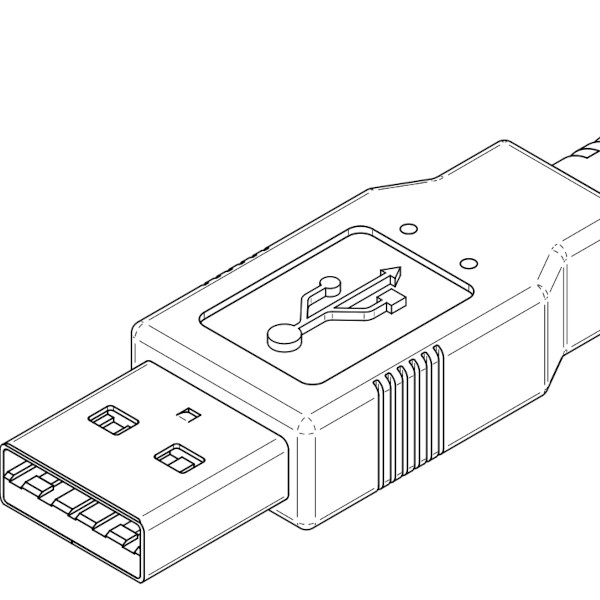[youtube=http://www.youtube.com/watch?v=ngXrTd-8jf4&w=470]
The Atari Punk Console, a tiny synthesizer based on the ubiquitous 555 timer chip, is the first build de rigueur for any budding electronic wizard wanting to build musical devices. With just a handful of caps, resistors, and a pair of pots, the APC is a fabulously fun and easy build made even cooler by [Pat]’s addition of a joystick.
The circuit of the Atari Punk Console consists of a 556 chip – basically two 555s put into the same package – and a pair of potentiometers to control the frequency and output of this very basic synth. Since most joysticks are just two pots arranged on an X-Y mount, [Pat] thought it would be cool to control his APC without twiddling knobs, and instead sweeping a joystick around.
After acquiring an old Microsoft joystick from his local Goodwill, [Pat] wired up his Atari Punk Console to the joystick, using the ‘fire’ button to turn the output on and off. The result is everything between a low machine gun-like tone to a nasal square wave that will hopefully keep pace with your chip-based audiophile friends.
Continue reading “Atari Punk Stick Puts A Synth In A Joystick”

